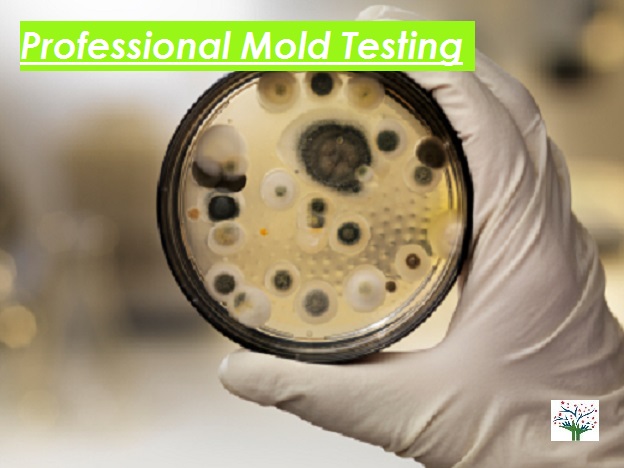Mycotoxin testing Services: Making certain Top Quality and Security in Your Supply Chain
Mycotoxin testing Services: Making certain Top Quality and Security in Your Supply Chain
Blog Article
The Need of Mycotoxin Examining in Agricultural Products to Make Sure Customer Security
The necessity of mycotoxin testing in farming products is a crucial element of public health and safety that necessitates comprehensive evaluation. Mycotoxins, hazardous substances generated by particular fungi, can penetrate various plants, leading to considerable health and wellness risks for consumers, such as cancer causing effects and organ damage.
Comprehending Mycotoxins
Mycotoxins, hazardous additional metabolites produced by particular fungis, provide a substantial danger to farming products and human health. These compounds are generated by different types of mold and mildews, such as Aspergillus, Fusarium, and Penicillium, which can contaminate crops both pre- and post-harvest - Mycotoxin testing Services. The most common mycotoxins include aflatoxins, ochratoxin A, fumonisins, zearalenone, and deoxynivalenol (DON)
Mycotoxin contamination can occur under particular environmental conditions, such as high moisture and temperature, which favor the growth of mold and mildew. Agricultural products like grains, nuts, flavors, dried fruits, and coffee are particularly at risk. The existence of mycotoxins in these commodities can result in significant financial losses as a result of decreased crop returns and the need for strenuous testing and decontamination procedures.
Understanding the biochemical nature and formation of mycotoxins is important for establishing effective reduction strategies. Research study has shown that mycotoxins exhibit a variety of chemical structures and homes, making detection and removal tough. Advanced logical techniques, consisting of chromatography and mass spectrometry, are utilized to determine and measure mycotoxins in agricultural products, making sure that contamination degrees continue to be within secure restrictions established by governing bodies.
Wellness Threats of Mycotoxins
Given the significant risks linked with mycotoxins in farming items, comprehending their effect on health and wellness is critical. Mycotoxins, hazardous second metabolites created by fungis, pose severe threats to both animal and human health and wellness.
Severe mycotoxin poisoning, although much less common, can cause extreme and prompt health issue such as liver damage, intestinal disturbances, and hemorrhaging. Ochratoxin A, an additional powerful mycotoxin, is connected to kidney damages and has potential carcinogenic impacts. Fumonisins, mostly influencing maize, are connected with esophageal cancer cells and neural tube problems.

Common Resources of Contamination
Understanding the typical sources of contamination is important for properly taking care of and minimizing the threats presented by mycotoxins. Mycotoxins are poisonous additional address metabolites generated by certain sorts of fungis, which can contaminate farming items at various phases of production, handling, and storage. The main sources of contamination include area problems, post-harvest handling, and storage space atmospheres.
Field problems play a substantial function, with factors like weather condition, crop vulnerability, and dirt health influencing fungal growth. Crops such as corn, peanuts, wheat, and tree nuts are particularly prone to mycotoxin-producing fungis like Aspergillus, Fusarium, and Penicillium species. Inadequate crop rotation and inadequate pest administration can exacerbate the risk of contamination.
Post-harvest handling is one more critical point where contamination can happen. Mechanical damage throughout harvesting and transport develops entrance factors for fungis, while improper drying strategies can leave dampness degrees high enough to support fungal growth.
Storage settings add considerably to contamination threats. Badly preserved storage space centers with high humidity and temperature level degrees develop excellent conditions for mycotoxin production. Normal examinations and proper storage problems are necessary in curbing this risk.
Mycotoxin Checking Methods
Reliable management of mycotoxin contamination pivots not just on recognizing prospective sources yet also on implementing robust testing methods to find these harmful substances. Mycotoxin screening methods can be extensively categorized into immunochemical and chromatographic techniques.
On the other hand, enzyme-linked immunosorbent assay (ELISA) and side flow assays project immunochemical methods. ELISA, in particular, is widely used due to its cost-effectiveness, ease of usage, and rapid turnaround time. Side circulation assays supply fast, on-site testing abilities, making them suitable for field applications where instant choices are essential.
Furthermore, advancements in molecular biology have introduced PCR-based approaches with the ability of my blog identifying mycotoxin-producing fungis at genetic degrees, supplying a predictive approach to contamination danger. Incorporating these diverse methods enhances the reliability and comprehensiveness of mycotoxin detection, making certain that farming products meet safety requirements and shielding consumers from possible wellness dangers.
Benefits of Routine Checking

Routine mycotoxin testing provides considerable advantages that considerably strengthen farming safety and quality. Mycotoxins, harmful substances created by specific fungis, can infect food and posture severe wellness risks, consisting of cancer and severe poisoning.
Furthermore, constant screening assists in maintaining the integrity and reputation of agricultural producers. By rigorously regulating and monitoring mycotoxin degrees, producers can stay clear of costly recalls and legal repercussions. This not only makes sure conformity with rigorous international safety and security requirements yet additionally cultivates consumer depend on and loyalty.

Final Thought
The requirement of mycotoxin screening in agricultural items is emphasized by the significant health and wellness threats postured by these hazardous compounds. It boosts the track record of producers and cultivates trust within the agricultural supply chain, inevitably securing public health.
The necessity of mycotoxin screening in agricultural products is a crucial facet of public wellness and safety and security that warrants detailed examination. Mycotoxins, poisonous substances generated by specific fungis, can penetrate various plants, leading to significant wellness dangers for consumers, such as Check Out Your URL cancer causing impacts and body organ damages.Mycotoxins, toxic second metabolites produced by specific fungis, offer a considerable threat to farming products and human health and wellness.Offered the considerable risks associated with mycotoxins in agricultural products, understanding their influence on health is vital (Mycotoxin testing Services).The need of mycotoxin screening in farming products is underscored by the substantial health and wellness threats postured by these harmful substances
Report this page